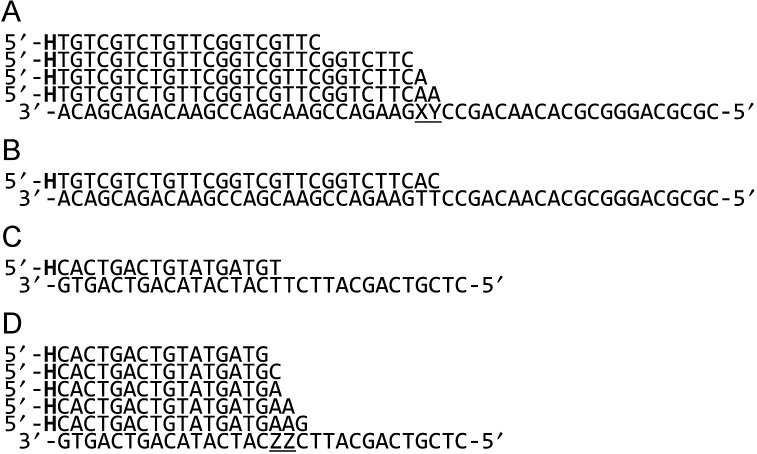Figure 2.

Oligodeoxynucleotides used in this study. (A) The 50 base template (written in 3′→5′ direction) containing various damaged bases (X = T, Y = T (control); X = T, Y = abasic site; X = T, Y = thymine glycol; X/Y = cis/syn thymine–thymine cyclobutane dimer) was hybridised with one of four primers (written in the 5′→3′ direction). The shortest primer allows running start read-through of the lesions. The longer primers allow extension to begin: (1) at the base immediately preceding the lesion; (2) directly opposite the abasic site or thymine glycol; (3) from either of the damaged bases in the thymine dimer. (B) and (C) Primer-templates designed to initiate DNA synthesis at mismatched C:T and T:T base pairs, respectively. (D) The substrates used to investigate the thymine 6–4 photoproduct dimer. The template strand (written in the 3′→5′ direction, ZZ represents the 6–4 photoproduct) was hybridised with one of four primers (written in the 5′→3′ direction). The primers allow synthesis to commence from: (1) the base directly before the lesion; (2) the 3′ base of the 6–4 photoproduct; (3) the 5′ base of the 6–4 photoproduct; (4) the base immediately following the lesion. All the primers shown in the figure were 5′-end labelled with hexachlorofluorescein (H).
